Instruction
Learn how to properly create lag
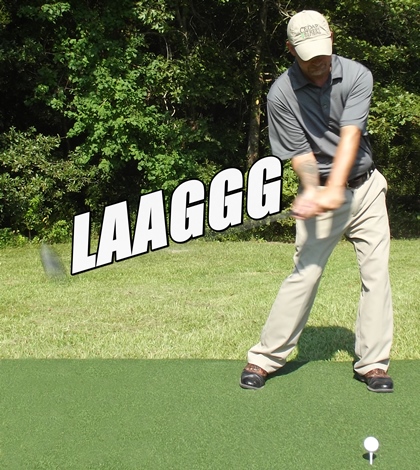
Many a player has set forth on the quest for golf technique’s holy grail, “lag.”
Unfortunately most golfers never attain it, either continuing in vain to chase the elusive secret or simply giving up the search. Others are unsatisfied with their current amount and believe that more lag will provide the key to unlock golf’s golden gates.
I am of the belief that even the best golfers will have varied amounts of effective club head lag. Like many other parts of the golf swing, every golfer has a unique “swing fingerprint.” Attempts to force too much lag can overload a golfer’s alignment structure, while “throwing away” lag indicates improper sequencing.
The key to success lies not in extreme lag conditions, but in the ability to transport your own personal amount of lag from start down, all of the way into impact and optimize your ball striking.
What is lag?
We will define lag in the golf swing as the dynamic condition of the club head trailing (lagging) behind the hands from the top of swing down to impact. We can observe the amount of bend in our trail wrist to visualize lag, or the amount of angle between the club shaft and our trail forearm.
Do golfers need lag?
Yes, based on the fact that we identified lag as a dynamic condition. The absence of lag is evidence of a breakdown in the natural swinging motion and a less-than-efficient stroke.
How much lag do golfers need?
The fact is that even among professional golfers, the amount of lag can vary greatly because of how and when each player naturally loads the club.
Extreme lag models include Ben Hogan, Phil Mickelson and Sergio Garcia to name a few. On the opposite end of the spectrum are great players such as Tom Watson, Steve Stricker and David Toms have very little lag. The commonality that I believe in is striving for is the ability to transport some degree of lag all of the way into impact.
Can golfers learn lag?
I have good news. Yes, golfers can learn to develop more effective lag by improving the quality of your overall motion.
Lag Training No-No’s
- “Hold the Angle:” Lag cannot be held, only sustained. Attempts to “hold lag” will result in slower swing speeds and open clubfaces.
- Max lag drills: Using drills to create extreme lag conditions might look impressive on video, but it will do little for improving your ball striking in the real world.
- Practicing “wide to narrow:” Most amateur golfers already lack backswing control. Trying to adopt an exaggerated wide-to-narrow arc usually creates an off-plane backswing, followed by a cramped down swing, steep angle of attack and a loosening of the fingers on the grip in an attempt to generate extreme lag.
Effective Lag Training
The secret to lag lies in the sequencing of a golfer’s down stroke. If motion is interrupted or the transition forced, the ability to sustain lag is lost. The two most common lag killers I see are “pivot disruption” and “hand misdirection” at impact.
Pivot disruption occurs when the lead shoulder slows or stops moving. Hand misdirection is the of the stopping the hands at the ball in an attempt to “hit,” rather than swing through impact in a seamless motion.
Photo 1: Bent trail wrist prevents the water from spilling
Photo 2: Trail wrist is still bent and the water dumps onto the ball.
Photo 3: Trail wrist has incorrectly gone from bent to flat and spills the water early
Lag Isolation Drill
Hold a club between the thumb, index, and middle fingers of your trail hand. Slowly begin swinging the club back and forth smoothly with no hitches or pauses. Now attempt to control the lag.
The entire motion breaks down when trying to either dramatically increase the lag or throw it away. Let the bend in your trail wrist simply respond to the weight of the club head moving back and through. Now you are experiencing effective lag. Sense the lack of tension in the forearm and wrist, as well as the lack of desire to “hit” early.
Extend the Shaft Drill
This drill facilitates improving both of our “lag killers.” Use velcro and an alignment rod to extend the length of your club shaft. Start by hitting small pitch shots with the rod on your lead side at address. You will quickly learn that to keep the rod from contacting your torso during the downstroke, the lead shoulder must continue moving up and back. The hands must also drive beyond the ball, not at it.
Grip the ground and create leverage with your feet. This is transporting lag, not “holding” it. Use these feelings and grow your stroke.
The video below shares some of my thoughts on lag and how I approach the subject in relation to myself and my students. Everyone has an opinion when it comes to lag. Golf gurus will continue to preach it; training aids will continue with claims to teach it; videos and books will continue to sell it.
My advice is not to look for one magic move to solve your ball striking ails, but rather to obtain improvement from a quality sum of the parts.
[youtube id=”DKAC37efbAA” width=”620″ height=”360″]
- LIKE139
- LEGIT16
- WOW6
- LOL9
- IDHT6
- FLOP1
- OB4
- SHANK18
Instruction
Clement: Laid-off or perfect fade? Across-the-line or perfect draw?

Some call the image on the left laid off, but if you are hitting a fade, this could be a perfect backswing for it! Same for across the line for a draw! Stop racking your brain with perceived mistakes and simply match backswing to shot shape!
- LIKE0
- LEGIT0
- WOW0
- LOL0
- IDHT0
- FLOP0
- OB0
- SHANK1
Instruction
The Wedge Guy: The easiest-to-learn golf basic

My golf learning began with this simple fact – if you don’t have a fundamentally sound hold on the golf club, it is practically impossible for your body to execute a fundamentally sound golf swing. I’m still a big believer that the golf swing is much easier to execute if you begin with the proper hold on the club.
As you might imagine, I come into contact with hundreds of golfers of all skill levels. And it is very rare to see a good player with a bad hold on the golf club. There are some exceptions, for sure, but they are very few and very far between, and they typically have beat so many balls with their poor grip that they’ve found a way to work around it.
The reality of biophysics is that the body moves only in certain ways – and the particulars of the way you hold the golf club can totally prevent a sound swing motion that allows the club to release properly through the impact zone. The wonderful thing is that anyone can learn how to put a fundamentally sound hold on the golf club, and you can practice it anywhere your hands are not otherwise engaged, like watching TV or just sitting and relaxing.
Whether you prefer an overlap, interlock or full-finger (not baseball!) grip on the club, the same fundamentals apply. Here are the major grip faults I see most often, in the order of the frequency:
Mis-aligned hands
By this I mean that the palms of the two hands are not parallel to each other. Too many golfers have a weak left hand and strong right, or vice versa. The easiest way to learn how to hold the club with your palms aligned properly is to grip a plain wooden ruler or yardstick. It forces the hands to align properly and shows you how that feels. If you grip and re-grip a yardstick several times, then grip a club, you’ll see that the learning curve is almost immediate.
The position of the grip in the upper/left hand
I also observe many golfers who have the butt of the grip too far into the heel pad of the upper hand (the left hand for right-handed players). It’s amazing how much easier it is to release the club through the ball if even 1/4-1/2″ of the butt is beyond the left heel pad. Try this yourself to see what I mean. Swing the club freely with just your left hand and notice the difference in its release from when you hold it at the end of the grip, versus gripping down even a half inch.
To help you really understand how this works, go to the range and hit shots with your five-iron gripped down a full inch to make the club the same length as your seven-iron. You will probably see an amazing shot shape difference, and likely not see as much distance loss as you would expect.
Too much lower (right) hand on the club
It seems like almost all golfers of 8-10 handicap or higher have the club too far into the palm of the lower hand, because that feels “good” if you are trying to control the path of the clubhead to the ball. But the golf swing is not an effort to hit at the ball – it is a swing of the club. The proper hold on the club has the grip underneath the pad at the base of the fingers. This will likely feel “weak” to you — like you cannot control the club like that. EXACTLY. You should not be trying to control the club with your lower/master hand.
Gripping too tightly
Nearly all golfers hold the club too tightly, which tenses up the forearms and prevents a proper release of the club through impact. In order for the club to move back and through properly, you must feel that the club is controlled by the last three fingers of the upper hand, and the middle two fingers of the lower hand. If you engage your thumbs and forefingers in “holding” the club, the result will almost always be a grip that is too tight. Try this for yourself. Hold the club in your upper hand only, and squeeze firmly with just the last three fingers, with the forefinger and thumb off the club entirely. You have good control, but your forearms are not tense. Then begin to squeeze down with your thumb and forefinger and observe the tensing of the entire forearm. This is the way we are made, so the key to preventing tenseness in the arms is to hold the club very lightly with the “pinchers” — the thumbs and forefingers.
So, those are what I believe are the four fundamentals of a good grip. Anyone can learn them in their home or office very quickly. There is no easier way to improve your ball striking consistency and add distance than giving more attention to the way you hold the golf club.
More from the Wedge Guy
- The Wedge Guy: Golf mastery begins with your wedge game
- The Wedge Guy: Why golf is 20 times harder than brain surgery
- The Wedge Guy: Musings on the golf ball rollback
- LIKE87
- LEGIT13
- WOW6
- LOL1
- IDHT0
- FLOP4
- OB1
- SHANK8
Instruction
Clement: Stop ripping off your swing with this drill!

Not the dreaded headcover under the armpit drill! As if your body is defective and can’t function by itself! Have you seen how incredible the human machine is with all the incredible feats of agility all kinds of athletes are accomplishing? You think your body is so defective (the good Lord is laughing his head off at you) that it needs a headcover tucked under the armpit so you can swing like T-Rex?
- LIKE0
- LEGIT2
- WOW2
- LOL0
- IDHT0
- FLOP0
- OB0
- SHANK2
-

 19th Hole2 weeks ago
19th Hole2 weeks agoDave Portnoy places monstrous outright bet for the 2024 Masters
-

 19th Hole5 days ago
19th Hole5 days agoJustin Thomas on the equipment choice of Scottie Scheffler that he thinks is ‘weird’
-

 19th Hole3 weeks ago
19th Hole3 weeks agoTiger Woods arrives at 2024 Masters equipped with a putter that may surprise you
-

 19th Hole5 days ago
19th Hole5 days ago‘Absolutely crazy’ – Major champ lays into Patrick Cantlay over his decision on final hole of RBC Heritage
-

 19th Hole2 weeks ago
19th Hole2 weeks agoTwo star names reportedly blanked Jon Rahm all week at the Masters
-

 19th Hole2 weeks ago
19th Hole2 weeks agoReport: LIV Golf identifies latest star name they hope to sign to breakaway tour
-

 19th Hole2 weeks ago
19th Hole2 weeks agoNeal Shipley presser ends in awkward fashion after reporter claims Tiger handed him note on 8th fairway
-

 19th Hole1 week ago
19th Hole1 week agoBrandel Chamblee has ‘no doubt’ who started the McIlroy/LIV rumor and why

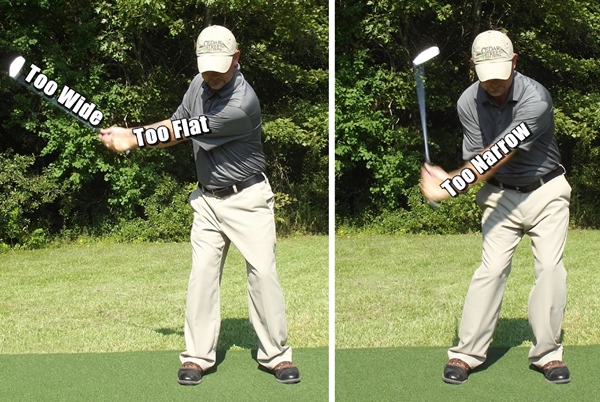
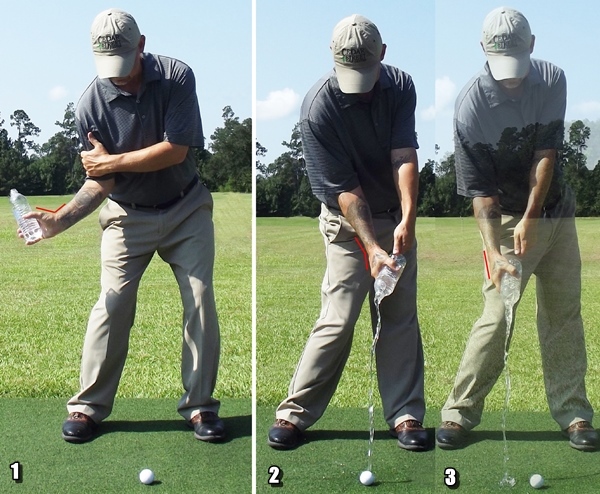
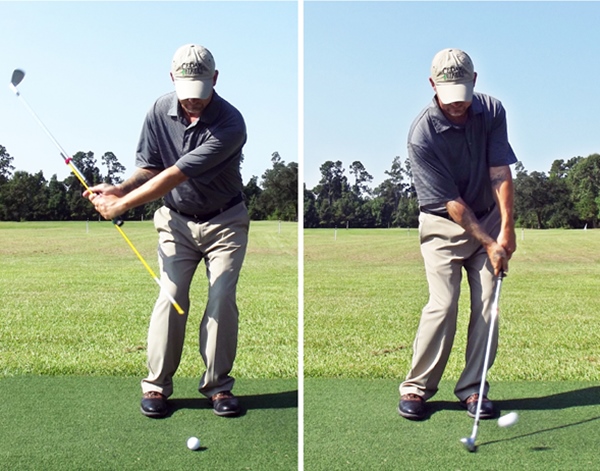
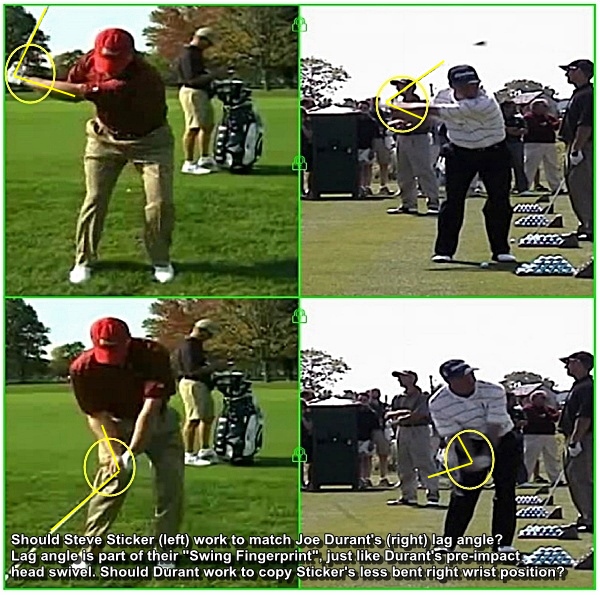















BOB KELLY
Aug 24, 2015 at 10:30 pm
First of all thank you. Is this a right hand dominant move? If so, how do I prevent the club head from passing my hands in an effort to get “ball then turf? Much appreciated, bob kelly
michael dwyer
Dec 30, 2013 at 7:40 am
great explanation of creating lag.the bottle drill really works.ben doyle used this drill in his teaching .homer Kelley was ahead of his time when he wrote the golfing machine..i have yet to read a better way to create lag than your explanation. brilliant. mike dwyer. master clubmaker
Michael Howes
Jan 8, 2015 at 3:26 pm
Michael – Many thanks for taking the time to post your feedback!
AJ Jensen
Dec 2, 2013 at 4:27 pm
“My advice is not to look for one magic move to solve your ball striking ails, but rather to obtain improvement from a quality sum of the parts.”
Some of the best insight I’ve ever read on the subject of golf improvement.
Another drill I’ve found to improve lag is to tee a ball up high, then try to top over it on purpose with a five-iron.
Raymond Rapcavage
Oct 5, 2013 at 8:23 am
Hi Michael,
Thanks for the post and good information on lag. If I could respectfully add to your points since it something that I see in your own swing to help create lag. That is start the downswing with the turning of your hips rather than throwing your arms from the top. If after doing that and then your feel that the left hand is pointing at the ground in the down swing you will have created all the lag that you need. Guaranteed that if a golfer is feeling that the back of the left hand is controlling the clubface and the club face is NOT passing the
hands (part of lag) he or she will have dominion over the ball ! 🙂
Best regards,
Raymond Rapcavage
The Golf Swing Shirt Company
http://www.golfswingshirt.com
Metal-X-Man
Sep 18, 2013 at 7:45 pm
Great video! I’m a low handicapper and this is always something I need to work on!
Michael Howes
Sep 19, 2013 at 8:31 pm
Thanks for posting guys!
naflack
Sep 17, 2013 at 9:54 pm
fantastic message!